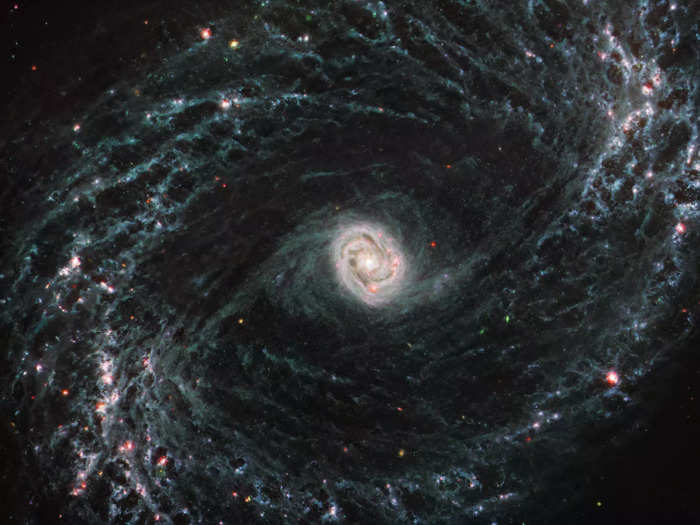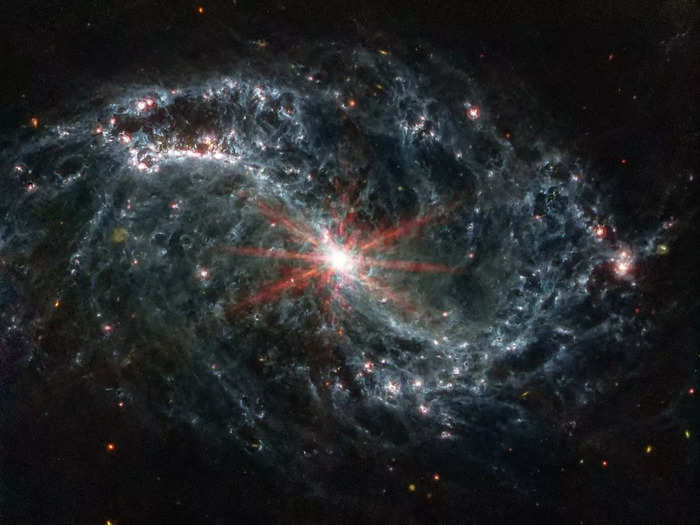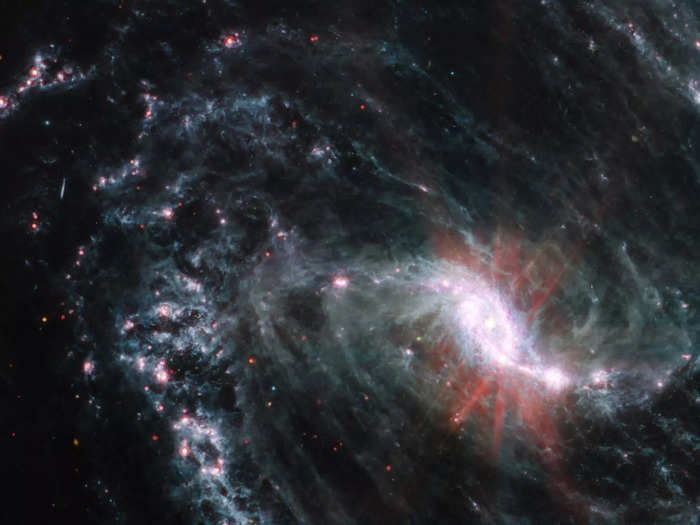Researchers at NASA used infrared wavelengths to take three photos of galaxies, "getting their first look at star formation, gas, and dust in nearby galaxies with unprecedented resolution."
The Webb telescope’s images of NGC 1433, NGC 7496 & NGC 1365 reveal the galaxies' networks of gas and dust in extraordinary detail. This data is part of an ongoing Webb survey of 19 spiral galaxies. NASA
NASA researchers used the James Webb Telescope to capture the images, according to a news release.
"The data has enabled an initial collection of 21 research papers which provide new insight into how some of the smallest-scale processes in our universe – the beginnings of star formation – impact the evolution of the largest objects in our cosmos: galaxies," NASA said in the release.
The first Webb telescope photo shows "a gray spiral galaxy with a bright white, circular core," according to NASA.
The Webb telescope team is studying 19 different spiral galaxies. The clarity of the telescope is letting scientists see "how the energy from the formation of young stars affects the gas around them."
Webb’s high-resolution infrared data fills in missing puzzle pieces, complementing the science from telescopes in other wavelengths. By aligning all of these data sets, the team will be able to accelerate new discoveries. NASA
Scientists have begun observing five of the 19 galaxies that they plan to view with the Webb telescope, according to NASA.
"The clarity with which we are seeing the fine structure certainly caught us by surprise," David Thilker of Johns Hopkins University in Baltimore, Maryland, said in the NASA release.
Erik Rosolowsky, a researcher from the University of Alberta, said "we are directly seeing how the energy from the formation of young stars affects the gas around them, and it's just remarkable."
The second telescope photo shows a "gray, web-like spiral galaxy" with "eight red diffraction spikes extending out from its extremely bright core," according to NASA. Colorful dots in the background "represent background galaxies."
The Webb telescope allows astronomers to view high-resolution images of the early parts of a star's life cycle that have never been available before.
Close-up of a wispy spiral galaxy on a black background. NASA
Adam Leroy, a researcher at Ohio State University, said, "the earliest stages of a star's lifecycle have" previously "remained out of view because the process is enshrouded within gas and dust clouds," according to NASA.
But the Webb telescope's ability to use infrared light to capture images of faraway galaxies can "pierce through the dust" and lets scientists see further than they could before.
The third galaxy photo is a close-up shot of a "wispy spiral galaxy," according to NASA. The "smattering of tiny red dots" throughout the image "represent background galaxies," according to the administration.



